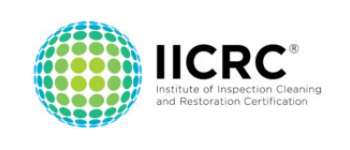Mold Mites: What They Are and How to Remove Them

The word “mites” may summon up in your mind the notion of dust mites. But if you’re having mold problems in your South Carolina home, then you undoubtedly also have mold mites, which, as the name hints at, feed on mold. As mold needs dark and damp conditions to grow, it also needs a food source of organic material to survive. Even a small amount of mold can generate enough nourishment for thousands of mold mites.
Scientists first discovered mold mites in 1781 in Austria. They’re a segment of a large collection of insects termed tyroglyphid mites. This group includes cheese mites, flour mites, and grain mites, and can be hard to tell apart from each other. These creatures are wingless and so tiny that they’re almost imperceptible to the human eye. They’re only found where there are high levels of moisture and humidity.
Mostly, mold mites aren’t dangerous. They don’t cause structural damage to buildings, they won’t harm people and animals, nor will they damage your possessions like furniture, clothing, etc. But they can trigger respiratory problems because these soft-bodied pests have long “hairs” which fall out and drift in the air. Those hairs, along with their feces, may generate allergic reactions in some people.
That may be the reason that some erroneously believe they’ve been bitten by mold mites (mold mites don’t bite) when they’ve come into contact with mold. Occasionally, what might seem like a bite or sting is really a skin irritation that may cause itching and other symptoms related to an allergic reaction to mold. But be aware that dust mites in your bed can initiate similar reactions.
How to Find Mold Mites
One way of finding out if mold and mold mites are in your South Carolina home is if you discover a brownish “mite dust” visible in uncommon places, such as on shelves or food. Another possible sign of indoor mold growth is if you feel better once you’re away from home – you breathe easier, coughing decreases, and you find you’re more energetic. Additionally, mold typically has a unique musty odor which makes it easy to identify, but seeing mold growth in damp, dark areas is the simplest way to find it. And normally, where there’s mold, there are mold mites.
How to Remove Mold Mites
Just as all living things need food to survive, exterminating mold mites requires eliminating their food source. That may sound simple but eradicating them from your home can be difficult and will necessitate determination and maybe even assistance. Here are some tips:
- Keep all parts of your home clean, including the isolated areas.
- Utilize dehumidifiers to aid in eliminating moisture that mold flourishes on.
- Air out your home regularly by opening doors and windows.
If after these actions you don’t perceive any improvement, or if the problem is more widespread than anticipated, or if your allergies worsen, call in Columbia’s best mold removal company, Kingsley Water Damage Restoration to treat your home.
The first thing we’ll do is have your environment tested by a Licensed Mold Assessment Consultant. If the results are positive, we’ll seal off the contaminated areas and set up air scrubbers to filter the air and remove mold spores. Then we’ll remove the mold, apply an anti-microbial solution and disinfect. Once we’re finished, we’ll suggest ways to help you maintain a healthy, mold-free environment for your family.





